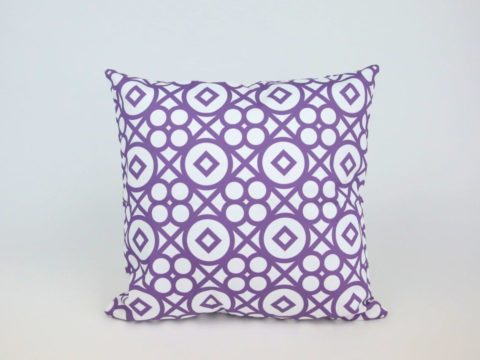Thomas Howard, 2nd Duke of Norfolk: Life Story
Chapter 8 : More Royal Marriages
In January 1506, Henry VII had a great stroke of luck. The son of the Emperor Maximilian, Philip, Duke of Burgundy and his wife, Juana, Queen of Castile, were ship-wrecked in England. Henry was disgruntled by Maximilian’s protection of Edmund de la Pole, Earl of Suffolk, who was a Yorkist claimant to the English throne. Instead of Philip and Juana being immediately provided with ships to continue their journey, Henry gave orders that they were to be conveyed, with all honour, to his court at Windsor. Surrey was sent to greet the royal refugees, complete with special menus from Henry’s own kitchens, and hawks for them to hunt en route.
Philip and Juana were treated with every honour, but it was quite clear that they would not be re-embarking until Suffolk had been handed over by Maximilian. The other agreement that Philip was persuaded to make, was for the betrothal of his seven-year-old son, Archduke Charles, to Henry’s younger daughter, Mary. This was a great opportunity for Henry – Charles was likely to be emperor one day, as well as king of Spain. Once Philip had accepted the situation, Surrey was deputed to accompany him back to the coast, delaying until word was received that Suffolk was safe in the hands of the English delegation sent to fetch him.
The following year, 1507, Surrey had orders to visit the court of Burgundy, to progress not only the marriage between Princess Mary and Archduke Charles, but a potential marriage between Henry VII, and Charles’ aunt, Marguerite of Austria, Dowager-duchess of Savoy. In the intervening period, Duke Philip had died, and Marguerite was now regent for Charles in Burgundy. Surrey was therefore sent to the court at Mechlin, to treat with Marguerite, and Maximilian.
Henry hoped that if a marriage could be arranged, he would act jointly with Marguerite as regent of Burgundy, which would have been very beneficial for English interests – Burgundy being England’s greatest trading partner. Nevertheless, so eager was he for the match that he instructed Surrey and the others to accept a marriage on the terms that Marguerite would act as sole regent.
Surrey and the rest of the delegation, including one Thomas Wolsey, an up-and-coming chaplain of the king’s, waited upon the Emperor at Mechlin, to agree the details of Princess Mary’s dowry and jointure. Maximilian honoured the kneeling Surrey and his colleague, the Master of the Rolls, taking them by the hand, and doffing his cap to them.
Surrey handed over letters from Henry VII, together with the usual compliments exchanged between monarchs. Wolsey’s account of the conversation that followed refers to speeches in both French and Latin, and some further remarks by Maximilian in German, which were translated by one of his bishops into Latin. We can thus infer not only that Surrey spoke French – most gentlemen did, but also that he had sufficient knowledge of Latin to conduct an embassy. The purport of Maximilian’s remarks was to request Surrey to write to Henry for permission to represent England at a forthcoming diet between Maximilian and Louis XII of France. Surrey confirmed that he would do as requested.
Maximilian sent further messages, informing Henry that he was delighted that England had sent ‘so honourable [an] embassy… men of such gravity and personages whom he was greatly desirous to be present at the communication of peace betwixt himself and {Louis}.’ The Emperor extended an invitation to Surrey and the others to visit him after supper, and attend evensong with him.
The mission was partially successful – the betrothal between Charles and Princess Mary went forward to a formal betrothal, but Archduchess Marguerite declined her aging suitor.
Back home by autumn 1507, Surrey, along with Bishop Fox, Dr Nicholas West, and Lord Herbert, was involved in negotiations relating to the fate of the widowed princess, Katharine of Aragon. It had been agreed after Arthur’s death, that she would marry the king’s new heir, Henry, Duke of York, soon to be Prince of Wales. By 1507, however, Henry VII was less keen on the plan. He no longer saw Spain as the most desirable alliance – it was possible it would break up into its constituent kingdoms of Castile and Aragon, if Ferdinand of Aragon had a son by his second wife.
In that case, a far better alliance would be with the Burgundian court, since Archduke Charles would inherit Castile from his mother, to add to his patrimony. In addition, Ferdinand had refused to entertain Henry’s suit for the widowed Queen Juana, or to give his consent to the match agreed between Archduke Charles and Princess Mary.
Henry could not, however, break the treaty with Spain willy-nilly. He needed to show that Ferdinand had failed to honour his obligations, and Surrey and his colleagues were just the experienced men who could be relied upon to wrong-foot Ferdinand’s ambassador, Dr Fuensalida. They informed the aggravated Spaniard that Princess Katharine’s dowry had not been paid and refused to accept that her household plate and jewels formed part of it. Her personal effects had become those of her husband, Prince Arthur, they informed him, and on his death the property of his father.
Nevertheless, Henry would not break off the agreement entirely, and send Katharine back to Spain, as he would have had assure her of her income as a widow. Sending money out of the country was Henry’s last priority.


